Georgia: Native Cultures up to 1650 AD
Georgia History up to 1650 AD
Paleo Indian Period
pre-9,000 BC
From Ocmulgee History & Culture:
Ice Age hunters arrive in the Southeast, leaving one of their distinctive “Clovis” spear points on the Macon Plateau (in the 1930’s this became the first such artifact found in situ in the southern U.S.).
Other resources:
Southeast Archeological Center: Paleoindian Period
New Georgia Encyclopedia: Paleoindian Period
A Glance at Georgia’s Prehistory
The Archaeology and History of the Native Georgia Tribes by Max E. White
The Best Books in Print about the Indians of Georgia for students in grades K-8
Transitional Period
8,000-9,000 BC
From Ocmulgee History & Culture:
People adjust to gradually warming weather as the glaciers melt and many Ice Age mammals become extinct.
Archaic Period
1,000-8,000 BC
From Ocmulgee History & Culture:
Efficient hunting/gathering; adaptation to a climate much like today; use of the atlatl (spear thrower), woodworking tools, etc.; white-tail deer becomes a staple; extensive shell mounds along the coast and some inland rivers.
The premier example of an Archaic shell midden is the Stallings Island site on the Savannah River near Augusta.
Posts:
Track Rock Gap
Places:
Stallings Island National Historic Site (1,800 to 1,500 BC) – seems not possible to visit
Sapelo Island Visitors Center
Private Tours of Shell Rings
Track Rock Gap
Other resources:
Southeast Archeological Center: Archaic Period
New Georgia Encyclopedia: Archaic Period
A Glance at Georgia’s Prehistory
The Archaeology and History of the Native Georgia Tribes by Max E. White
Stallings Island Site
Sa[elo Island Shell Rings
Beneath these waters: Archeological and historical studies of 11,500 years along the Savannah River by Sharyn Kane and Richard Keeton
The Best Books in Print about the Indians of Georgia for students in grades K-8
First pottery in this country appears along the Georgia/South
2,500 BC
From Ocmulgee History & Culture:
Carolina coast and soon filters into what is now Middle Georgia; it is tempered or strengthen with plant fibers which burn out during firing, giving a worm-hole appearance to the vessel surface.
Other resources:
Native American Pottery in South Carolina: Stallings
Woodland Period
1,000 BC-AD 900
From Ocmulgee History & Culture:
Pottery tempered with sand and grit, sometimes decorated with elaborate designs incised, punctated or stamped into its surface before firing; cultivation of sunflowers, gourds, and several other plants; construction of semi-permanent villages; stone effigy mounds and earthen burial and platform mounds; connections to the Adena/Hopewell Cultures farther North and to Weeden Island in Florida and South Georgia.
Posts:
Georgia: Fort Mountain Wall
Places:
Fort Mountain State Park, Chatsworth, GA
Site of an enigmatic Woodland Indian stone wall, mistaken for a fort by early settlers. The mysterious 855-foot-long wall is thought to have been built by early Indians as fortification against more hostile Indians or for ancient ceremonies.
Kolomoki Mounds State Park, GA
This historically significant park is the oldest and largest Woodland Indian site in the southeastern United States, occupied by American Indians from 350 to 750 a.d. Georgia’s oldest great temple mound, standing 57 feet high, dominates two smaller burial mounds and several ceremonial mounds. The park’s museum is built around an excavated mound, providing an unusual setting for learning who these people were and how they lived. Inside, visitors will find numerous artifacts and a film.
Other resources:
Swift Creek Culture
Weeden Island Culture
Southeast Archeological Center: Woodland Period
New Georgia Encyclopedia: Paleoindian Period
A Glance at Georgia’s Prehistory
The Archaeology and History of the Native Georgia Tribes by Max E. White
The Best Books in Print about the Indians of Georgia for students in grades K-8
Posts:
Kolomoki Mounds State Park, GA
Mississippian
900-1650 AD
From Ocmulgee History & Culture:
A new way of life, believed to have originated in the Mississippi River area appears on the Macon Plateau. These people, whose pottery is different from that made by the Woodland cultures in the area, construct a large ceremonial center with huge earthen temple / burial / domiciliary mounds and earthlodges, which serve as formal council chambers. Their economy is supported by agriculture, with corn, beans, squash and other crops planted in the rich river floodplain. Indigenous Woodland people in surrounding areas interact with these people, who possess early symbols and artifacts associated with the Southeastern Ceremonial Complex (Southern Cult).
The great Macon Plateau town declines and the Lamar and Stubbs Mounds and Villages appear just downstream. These towns are a combination of the old Woodland culture and Mississippian ideas. The Southern Cult, distinguished by flamboyant artistic motifs and specialized artifacts, flourishes at places like Roods Landing and Etowah (GA), Moundville (AL), Hiwasee Island (TN), Cahokia (IL), and Spiro (OK).
The Lamar Culture, named for the Lamar Mounds and Village Unit of Ocmulgee National Monument, becomes widespread in the Southeast; chiefdoms marked by smaller, more numerous, often stockaded villages with a ceremonial center marked by one or two mounds; combination of the both Woodland and Mississippian elements.
Posts
Ocmulgee National Monument
Track Rock Gap
Etowah Indian Mounds
Kirbo Interpretive Center
Places:
Ocmulgee National Monument
The Lamar site at Ocmulgee National Monument contains the only known example of a spiral mound in North America. This unique mound was built around 1350. The mound is accessible during low water levels of the Ocmulgee River with a ranger lead tour several times a year.
Track Rock Gap (1000 AD)
Etowah Indian Mounds, Cartersville, GA
Open Wednesday through Saturday. Last of the prehistoric cultures, the members of this Mississippean tribe built several mounds in the fertile Etowah River watershed, including these within the boundaries of this Georgia State Park
Home to several thousand Native Americans from 1000 A.D. to 1550 A.D., this 54-acre site protects six earthen mounds, a plaza, village site, borrow pits and defensive ditch.
Kirbo Interpretive Center at Florence Marina SP and Rood Creek Indian Mounds
Other resources:
The Best Books in Print about the Indians of Georgia for students in grades K-8
The Archaeology and History of the Native Georgia Tribes by Max E. White
Things to research:
Coosa Indians
King Site
Rock Eagle
Rock Hawk
Creek Indians
1400-?? AD
From The New Georgia Encyclopedia:
About A.D. 1400, for reasons still debated, some of these large chiefdoms collapsed and reorganized themselves into smaller chiefdoms spread about in Georgia’s river valleys, including the Ocmulgee and the Chattahoochee. The Spanish incursions into the Southeast in the sixteenth century devastated these peoples. European diseases such as smallpox may have killed 90 percent or more of the native population. But by the end of the 1600s Southeastern Indians began to recover.
Other resources:
History of the Creek Indians
in Georgia

GBK Gwyneth


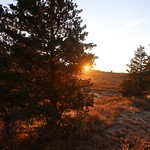



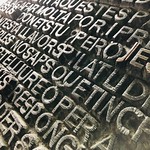
























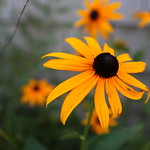



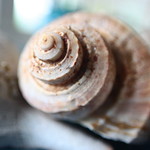
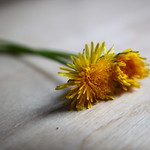




Leave a Reply